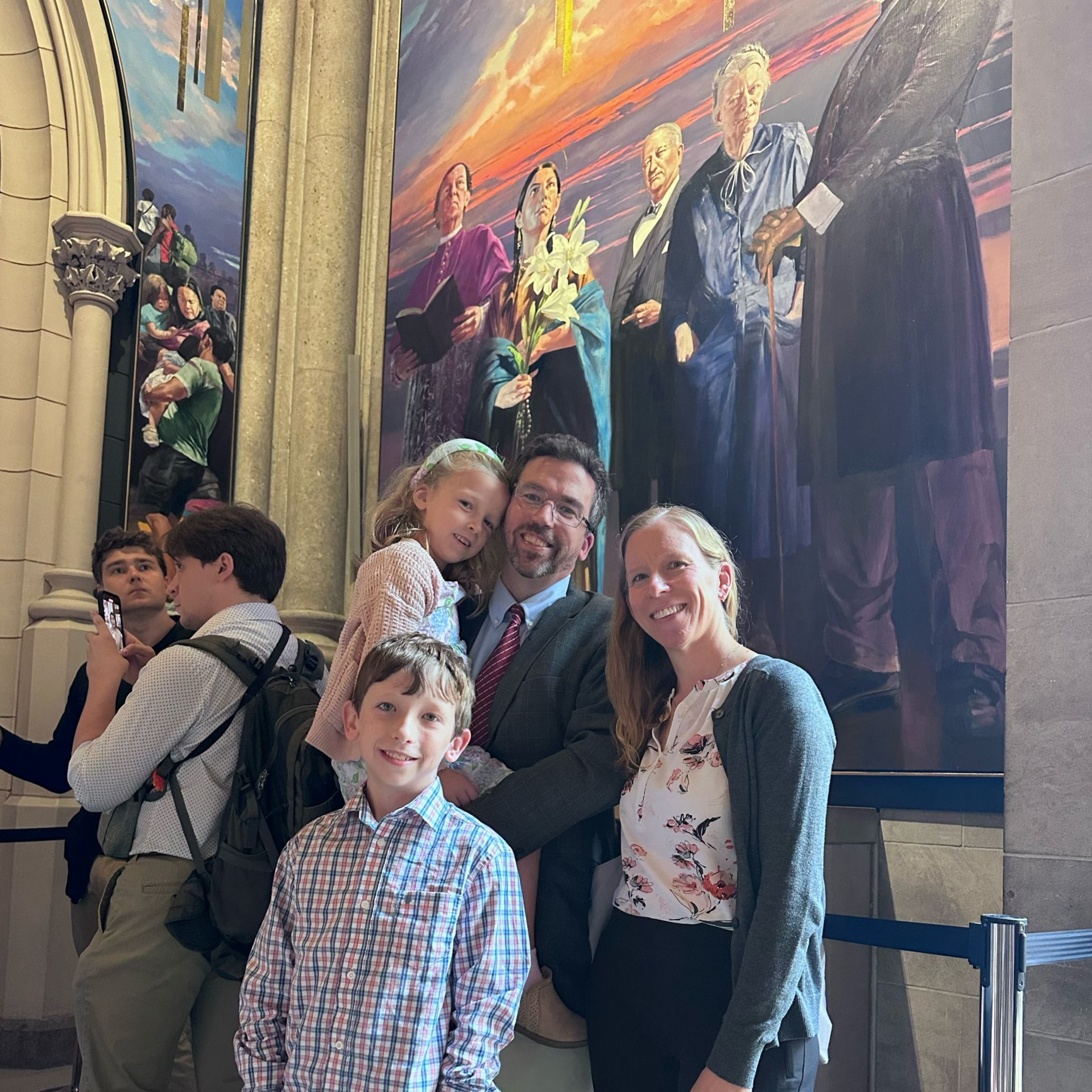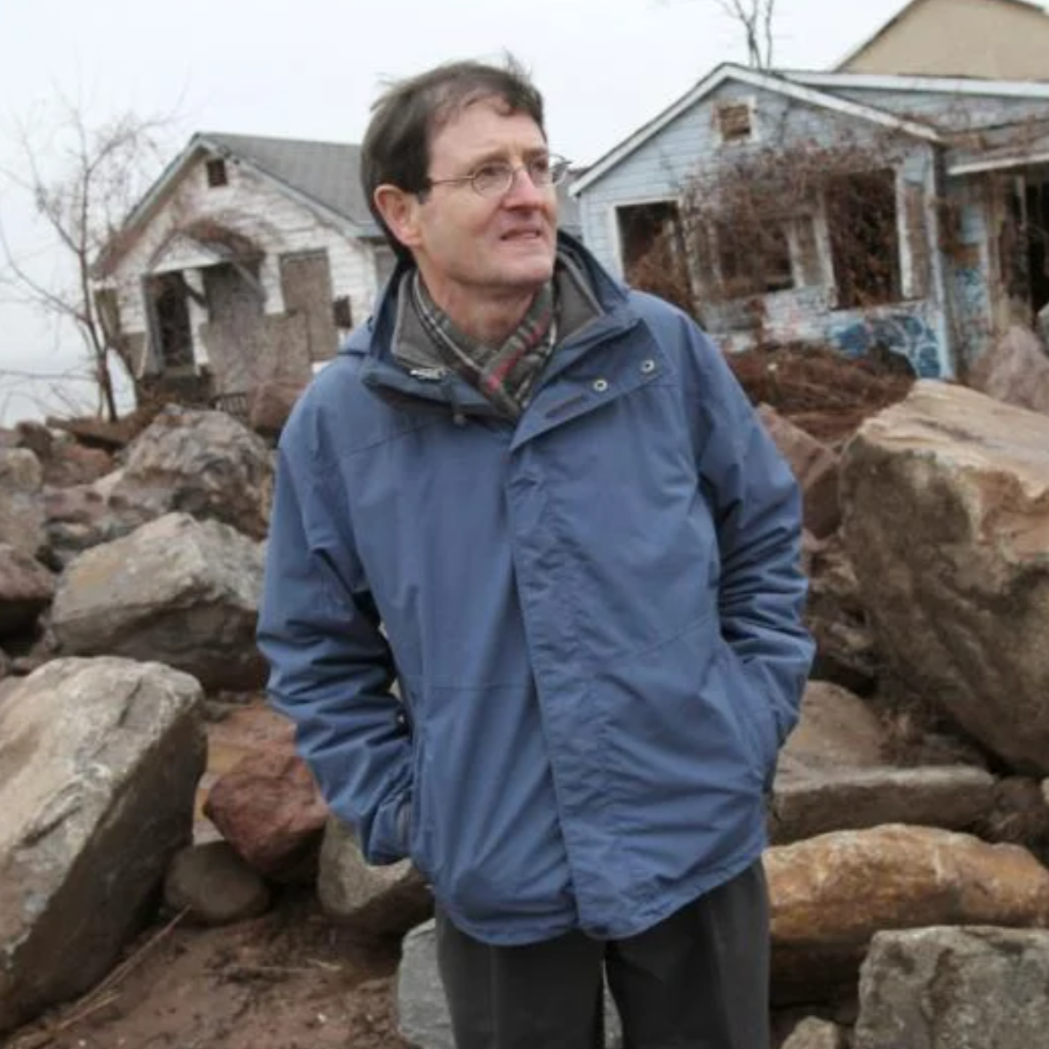Dorothy’s adherence to the Gospel of nonviolence has also inspired Notre Dame graduate students who invoked Dorothy's witness of Gospel nonviolence and her legacy of antiwar activism to call their administration back into compliance with Catholic social doctrine last month. Jerry Windley-Daoust reported on the campus protests for the Catholic Worker movement website in "After Arrests, Students Renew Call for Notre Dame to Follow Catholic Teaching on War, Investments."
Ordinary Time, Everyday Holiness
Dear friends,
Warm June greetings from all of us at the Dorothy Day Guild! As we settle into the liturgical season of Ordinary time, the time of the Church, we hope that this missive finds you enjoying a sense of vitality and growth in community. For Dorothy, the rhythms of Ordinary time reflected the goodness of everyday life and the quiet presence of God in the shared meals, celebrations, and work of life together in her family and at the Catholic Worker. A disciple of Peter Maurin and of “the Little Way,” Dorothy knew that the path to holiness is found through a lifetime of these small moments and practices undertaken with love.
Dorothy Day Guild news and updates:
Since Pentecost, the Dorothy Day Guild has kept busy with a number of exciting projects. On May 20th, we invited a group of Catholic educators and ministers from three different states to Manhattan College-- actually, a room where Dorothy herself spoke in 1949-- for a teachers' workshop on incorporating Dorothy’s life and witness into a curriculum geared towards teens and young adults.
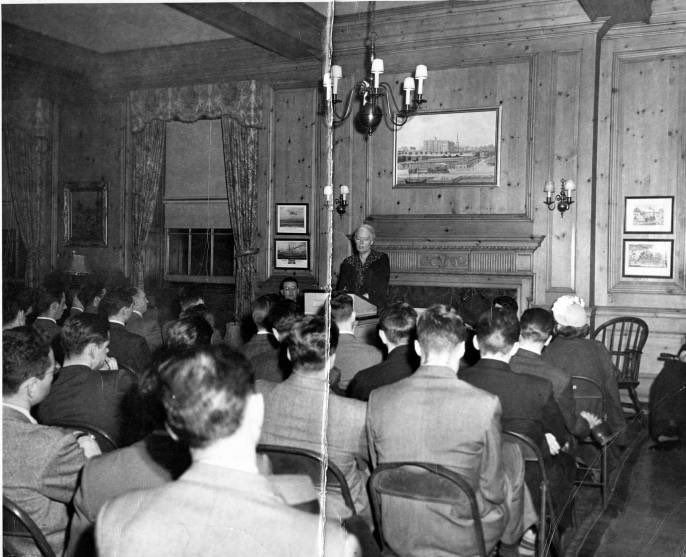
We all enjoyed the lively conversations between veteran educators who shared their reflections with us and loved hearing from our two presenters, Robert Ellsberg, who spoke with us by Zoom on his time with Dorothy as managing editor of The Catholic Worker in the 1970s, and Liam Myers, who talked with us about how he integrates community-based learning into his curriculum as a college instructor and as a Catholic Worker at Maryhouse. Thank you so much to all of our participants for such a great day of learning and collaboration! We’d like to share our opening prayer from the workshop with you:
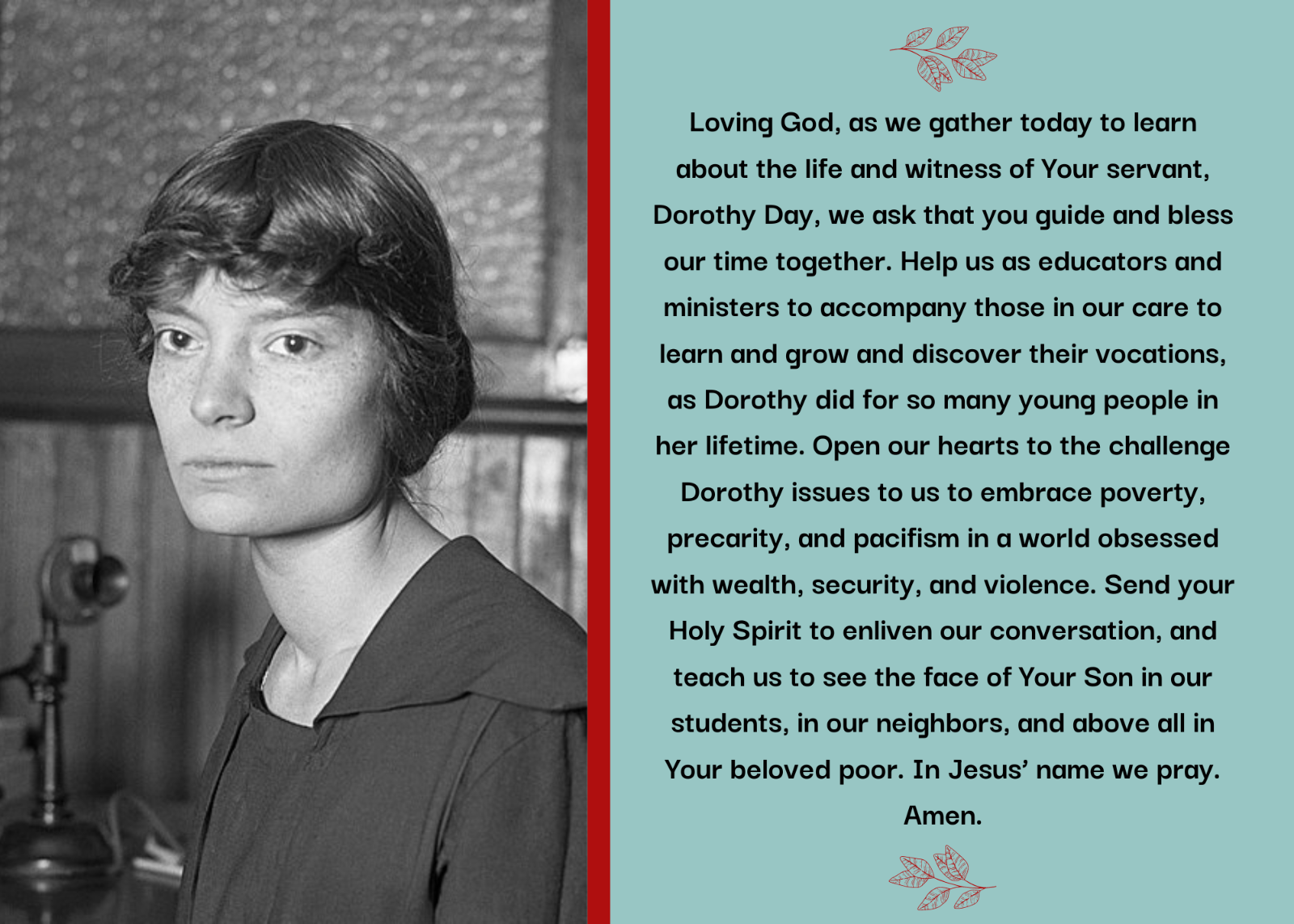
The Catholic social tradition continues to hold a deep attraction for young people within and outside of the Church, but translating the abstractions of the papal encyclicals into concrete action for the common good can be a challenge. Dorothy’s life and legacy can provide an entry point for all of us who are eager to live out these teachings “in the world”, especially as they relate to peace and care for the poor. If you’re interested in bringing this workshop to your city, please contact us!
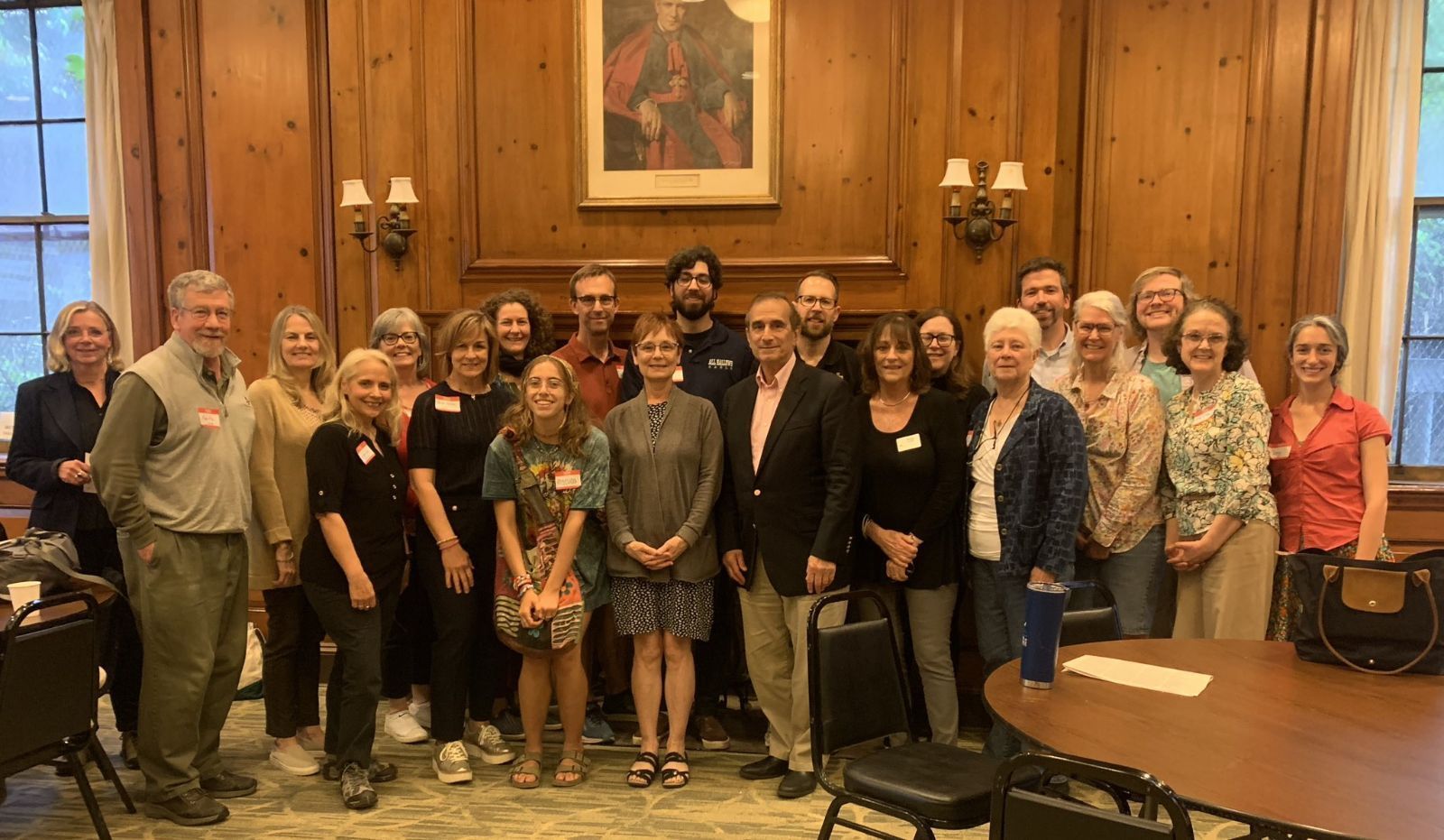
The following week, on May 31st, our board of directors met to formally incorporate the Dorothy Day Guild and approved new bylaws as an organization committed to “supporting and advancing her Cause.” We are so grateful for the wealth of experience and dedication that our board brings to this new stage in our work, both in promoting Dorothy’s formal canonization process as well as sharing her witness with the world. If you have not formally joined the Guild yet, we invite you to take this opportunity to become a member this summer, either as an individual or a member of a family, parish, school, or Catholic Worker community. Your membership dues go directly towards the work of our team in Rome, headed by the expertise of our postulator, Dr. Waldery Hilgeman, the daily operations of the Guild, and towards hosting in-person and online events which engage Dorothy’s life and legacy in our world today. However, your prayers and the witness of your own lives are the most important gift you can offer the cause– we are always happy to waive membership dues if they present a financial burden. Members of the Dorothy Day Guild commit to praying for Dorothy’s canonization, sharing her legacy, and living out her legacy of Gospel nonviolence, hospitality, and voluntary poverty in their own communities. We’d love to have you join us!
Finally, tomorrow, June 11th, is a particularly special day for the Dorothy Day Guild. On Tuesday morning, we are overjoyed to be traveling to Louisville, KY for the annual summer meeting of the United States Conference of Catholic Bishops to present the inaugural Dorothy Day Peacemaker Award which honors the “heroic witness of Servant of God Dorothy Day by celebrating an individual or group who exemplifies her lifelong commitment to peacemaking and Gospel nonviolence.” We are thrilled to be joined by several of our board members, our friends from the Catholic Peace Fellowship, and an incredible group of lay and ordained peacemakers as we present this award for the first time to Pax Christi USA. As our Dorothy Day Guild co-chair Dr. Kevin Ahern says, “For over 50 years, Pax Christi USA has been an important voice for peace, justice, and nonviolence in the Catholic community. Their recent work… has significantly deepened the conversation within the church on Gospel nonviolence. In this work, they embody in a special way the prophetic vision of Servant of God, Dorothy Day.”
Enormous thanks and congratulations to our dear friends at Pax Christi. We can’t wait to see you tomorrow morning!
Reading and watching recommendations for June:
This month in our round-up we have a few excellent pieces to share with you. First up is a wealth of articles from The Tablet, including one on Kristi Pfister’s artistic engagement with Dorothy’s legacy, a reflection on Dorothy’s Eucharistic faith by board member Geoff Gneuhs, and a piece on the Maryhouse community’s new rooftop garden, which they developed through reflection on the needs of their neighbors and on Pope Francis’ letter “Laudato Deum.”
Dorothy’s life and legacy also continue to inspire work in new forms of media! Jeff Korgen and Christopher Cardinale’s graphic biography, Dorothy Day: Radical Devotion now has a book trailer and will be available in print this September through Paulist Press. This is a great introduction to Dorothy as a journalist, pacifist, personalist, and single mother for all ages, and we particularly encourage you to check it out for graphic novel aficionados. You can pre-order the book here, and to help make this book available to a wider audience, consider requesting a copy through your public library system!
We were also delighted to see a write-up on Dorothy in Life magazine’s “100 Women Who Changed the World” feature this month! Forty-four years after her death, Dorothy continues to inspire interest and reflection in both the secular and Catholic press; this is truly an indication of her ability to bridge some of the widest chasms in a time of polarization and conflict, and for this, we give thanks.
We would like to share with you three reflections on Dorothy’s enduring legacy in our present context, all coming out of Notre Dame, IN. In preparation for this summer’s National Eucharistic Congress, Dr. Margaret Pfeil, a member of the St. Peter Claver Catholic Worker community in South Bend, IN, gave a recent address on Dorothy as an exemplar of “Eucharistic abundance” in her everyday practice of the presence of God. Margie’s talk, “Eucharistic Abundance and Social Regeneration” offers a theology of the Eucharist grounded in the liturgy and the works of mercy as responses to God’s initial act of generosity towards us.
As doctoral candidate in theology Flora Tang stated, “I am absolutely inspired by and drawing on the Catholic Worker tradition and the witness of Catholic peacebuilders such as Dorothy Day. My Ph.D. degree is in theology... [and my] faith draws significantly upon Dorothy Day, Dan Berrigan, and other Catholic anti-war protestors."
We were reminded this spring of the solidarity that Dorothy offered to young antiwar activists in her own time. In Dorothy's Nov. 1965 Union Square speech, she said:
"The word of God is the new commandment he gave us–to love our enemies...that is, to lay down our lives for our brothers throughout the world, not to take the lives of men, women, and children, young and old, by bombs and napalm and all the other instruments of war. Instead he spoke of the instruments of peace, to be practiced by all nations–to feed the hungry of the world, –not to destroy their crops, not to spend billions on defense, which means instruments of destruction. He commanded us to feed the hungry, shelter the homeless, to save lives, not to destroy them, these precious lives for whom he willingly sacrificed his own. I speak today as one who is old, and who must uphold and endorse the courage of the young who themselves are willing to give up their freedom."
As these student activists prepare for a June 28th trial date, please join us in praying for peace in the Holy Land and an end to the manufacture and sale of the instruments of war around the world.
Finally, we really appreciated Rick Becker’s "Saint Wannabes: Catholic Higher Education and the Pursuit of Holiness," which was adapted from a talk he gave this spring at St. Mary’s College. In this piece, Rick places Dorothy in the company of Sister Madaleva Wolff and Venerable Rose Hawthorne as holy women who pursued God in the world, particularly through the incarnational practices of the works of mercy. As he writes, Dorothy “genuinely knew this Jesus, and the Jesus she knew was real and three-dimensional — an authentic point of contact between things temporal and eternal. If there was such a Jesus, I wanted to know him, too.”
Prayer requests:
We continue to receive requests for prayer from members and friends of the Dorothy Day Guild, as well as joyful news of favors and graces received through Dorothy’s intercession– Deo Gratias! As you pray this month, please remember Dotty in New York, who has asked for healing from her cancer and to grow in love for and service to the poor. Please also remember Katrina in Missouri, who has asked for prayers for a new job. Sylvia, whose teen son recently introduced her to the life and legacy of Dorothy, has asked for our prayers for her greatest need. Others have reached out to us with sensitive requests that they prefer to keep private– if this is you, please know that members of the Dorothy Day Guild are holding you in prayer. We trust that Dorothy, who accompanied many struggling friends and neighbors during her lifetime, will bring your needs before a deeply loving God.
A few words from Dorothy:
Summer has truly settled in here in the Northern Hemisphere, and we know that for many of you this means a shift into a new rhythm of life and a change of pace from the routines of the winter and spring. Dorothy likewise treasured living according to the different seasons of both the Church and the natural world. She had a particular love for water and throughout her life spent many peaceful hours walking along Lake Michigan, the Hudson River, and especially the shores of Staten Island. Even prior to her conversion, Dorothy experienced a sense of belonging and at-homeness in creation which eventually led her to love for the Creator. This month, we’d like to close with a paragraph of The Long Loneliness, from the chapter “Man is Meant for Happiness.”
“Late in the afternoon the wind dropped, the door of Lefty’s shack stood open and he sat there contemplating the sunset. The waves lapped the shore, tinkling among the shells and pebbles, and there was an acrid odor of smoke in the air. Down the beach, the Belgians were working, loading rock into a small cart which looked like a tumbril, drawn by a bony white horse. They stopped as though in prayer, outlined against the brilliant sky, and as I watched, the chapel bell at St. Joseph’s rang the Angelus. I found myself praying, praying with thanksgiving, praying with open eyes while I watched the workers on the beach and the sunset, and listened to the sound of the waves and the scream of snowy gulls.”
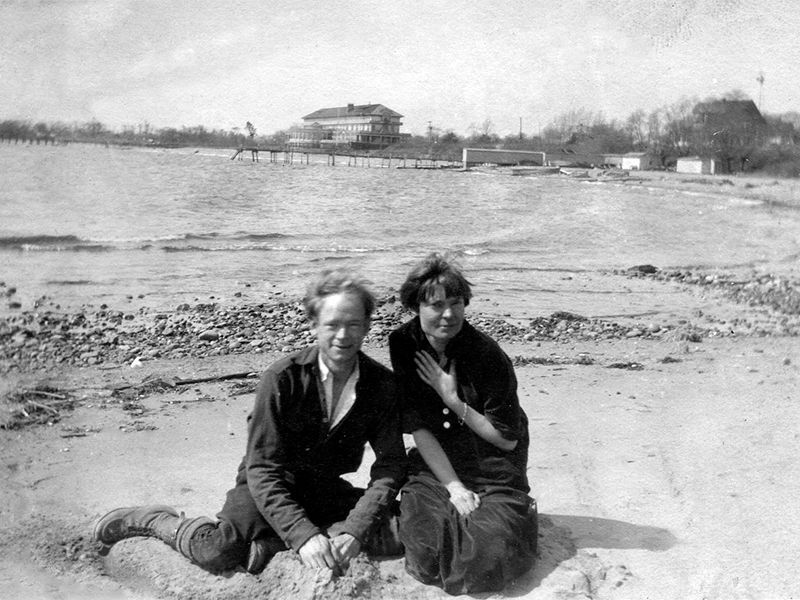
We hope that each of you find time this month to enjoy the beauty of God’s creation! Whether you are traveling or enjoying time in your home place this summer, all of us at the Dorothy Day Guild wish you the peace and fulfillment that Dorothy found on the beaches of her beloved Staten Island.
Yours,
Dr. Casey Mullaney, on behalf of the Dorothy Day Guild
Share this post

